How to find your WooCommerce conversion rate
In this article, we are going to show you how you can find your WooCommerce conversion rate, as well as discuss what conversion rate is. We’ll also look into other aspects of the metric, such as its formula and the average rate per industry. And finally, we’ll see how you can improve your site and find out your segmented conversion rate with Users Insights.
In essence, conversion rate is the percentage of users who take a desired action. It is the metric you use to define how successful your pages are for the goals they have. But this metric also has a lot of ramifications and implications.
Our main topics of discussion are:
- Defining WooCommerce conversion rate
- WooCommerce conversion rate data
- Average eCommerce conversion by industry
- How to improve your conversion rate
- Calculate your conversion rate
Let’s get right into it!
Defining WooCommerce conversion rate
As we’ve mentioned before, conversion is a very broad concept. Therefore, we need to narrow down what we want to measure when we use the WooCommerce conversion rate.
Ideally, your main goal is turning visitors into customers. Therefore, it makes more sense if we use the conversion term to define when a user (registered or not) turns into a customer. You could base your conversions off your sales only, but that may lead to weird stats. For example, if you have customers with repeat purchases that would bring your conversion rate up, messing up your analysis.
In some cases, it may be worth measuring the conversion rate of other actions as well. For instance, if you have a page with an offer with the sole purpose of collecting newsletter subscribers, your conversion rate should reflect that.

WooCommerce conversion rate data
In general, the conversion formula is based on comparing the achieved goals by the total attempts. If we focus on user-related WooCommerce metrics, our formulas are going to be made of users who acted divided by the total of users. For example, for our user to customer conversion rate, we’ll divide the customers (users who bought products) by the total number of users.
If we were focusing on visitors instead, we would have to divide the total number of customers by the total number of visitors.
But in order to get an accurate conversion rate we need to deal with some technical details. We don’t have a reliable way to measure every unique visitor of our site in order to compare with our customers. So to make our data accurate you can create ways to collect your user information (giveaways, newsletters, coupon codes).
Only after you can measure your non-customers we can find an accurate conversion rate. Another issue is when you enable guest checkout, as these are customers that don’t have an account. You can get around this by automatically creating accounts for your guest users.
In a nutshell, getting the conversion rate isn’t just about creating a formula, but also creating ways to collect the data that you need for these formulas.
Average eCommerce conversion by industry
Since conversion rates are hard to measure, they are also hard to compare. Because they can mean different things, finding out if your conversion rate is good or bad is a challenging task.
There are many aspects that can change how well sites perform as well. From the site type itself, to their products, audience or location. Even the user’s device (which reflects their demographics) leads to discrepancies in the results achieved.
But just as a reference, let’s take a look at the averages provided by MarketingSherpa:
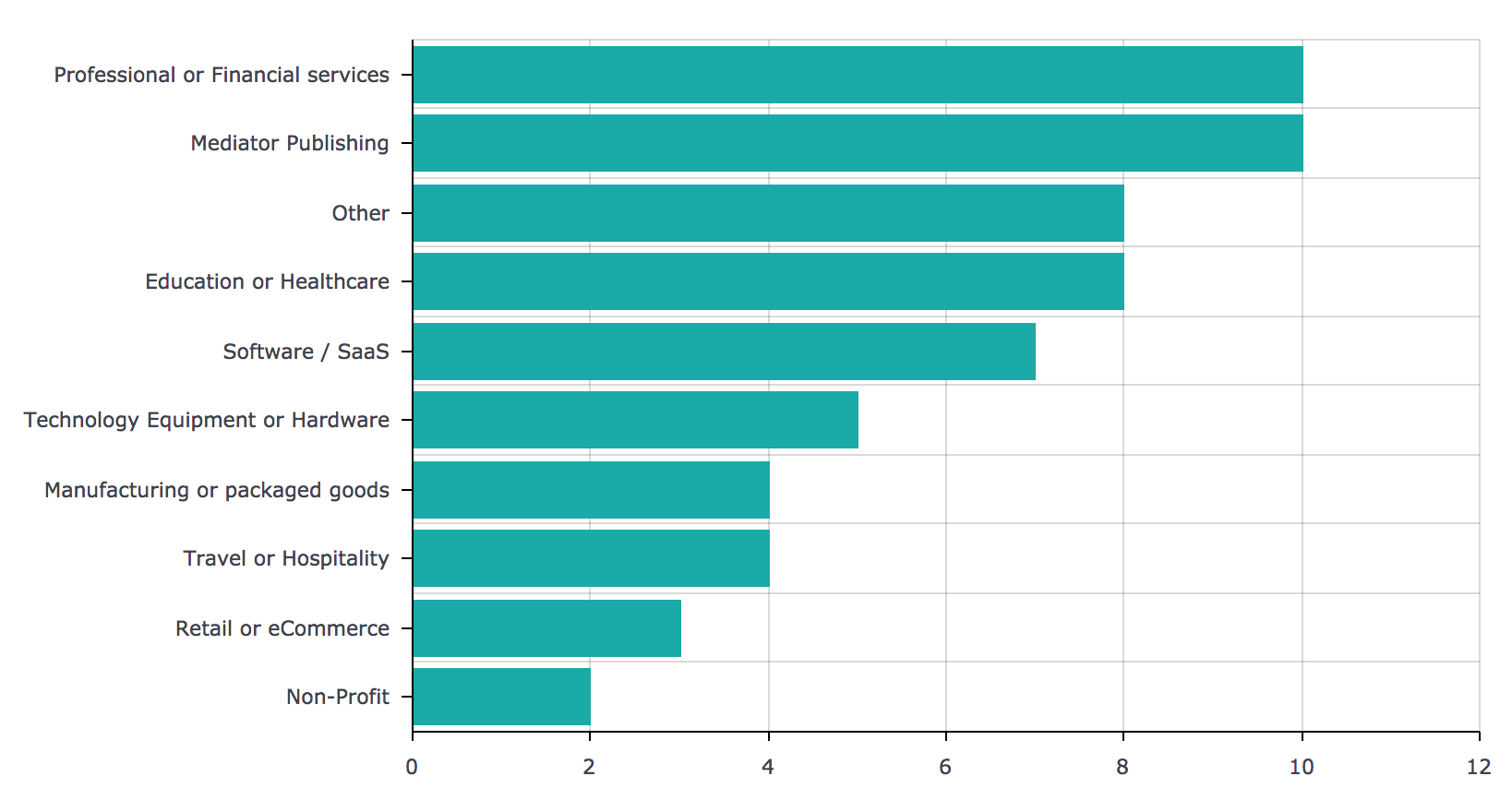
This is just a rough idea of the conversion rates across different industries. Additionally, individual sites may greatly outperform their industry average, so take these numbers with a grain of salt.
How to improve your conversion rate
What impacts conversion rate and what can be done in order to improve it? Well, the answer is kind of complicated because there are a lot of factors that are affecting the conversion rate, from the website design, the quality of product images to shipping costs and inventory. But the number one factor is always trust.
There are many ways to increase trust in your website. Adding social proof such as testimonials, reviews or case studies can heavily impact how your customers perceive your store. Also, offering guarantees such as money-back offers or even product guarantees can impact your conversion rates, as customers perceive your product as trustworthy.
Still, it may not be easy to get the best converting design in the first run. That’s why running proper split tests (A/B tests) are a great way to test variations and choose the ones that are performing the best.
In addition, there are strategy-wise actions that can help your conversion rates. One key aspect is traffic sources. It’s easy to detect which your biggest traffic sources are, but measuring their performance is also important. Sometimes your biggest source just increases your bounce rate, instead of converting.
And finally, promoting your top categories or products is usually a good idea. If a product is already appealing to your audience, adding them in the spotlight is going to help you increase your conversions. You may also recommend other related products and increase your ticket size.
Calculate your conversion rate
Until now we’ve seen a great deal of information about what the WooCommerce conversion rate is, and how to improve it in your site. Next, we’ll see how you can actually gather this information using the Users Insights plugin.
Calculating your conversion rate based on registered users
The most basic metric is your overall conversion rate, and this can be collected by simply filtering customers out of your entire user base.
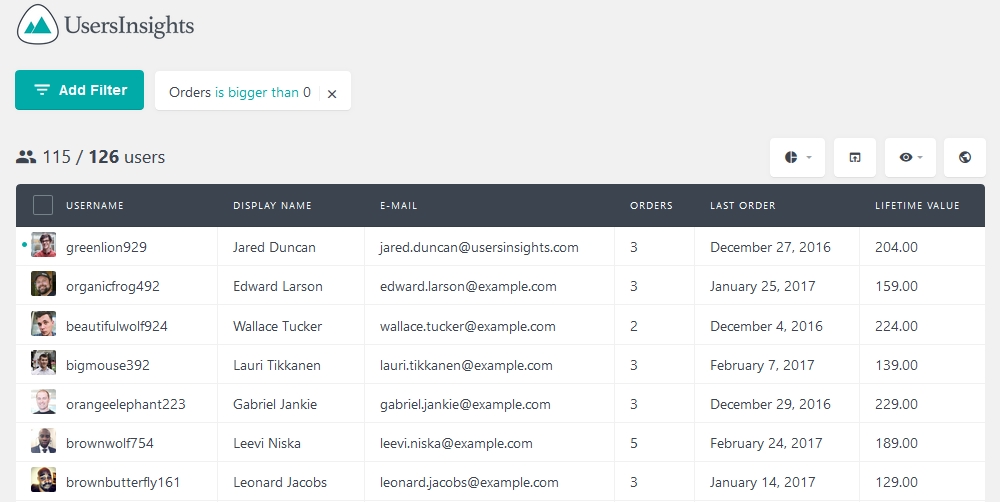
In our case we just need to divide the number of customers by the total of users. It’s 115 / 126, so a 91% conversion rate. Generally it is normal for user based conversion rates to be higher, since the registered users have already shown some interest in your site and are more likely to become customers than the regular visitors.
You can also save this or any report as a segment, and see how it evolves over time.
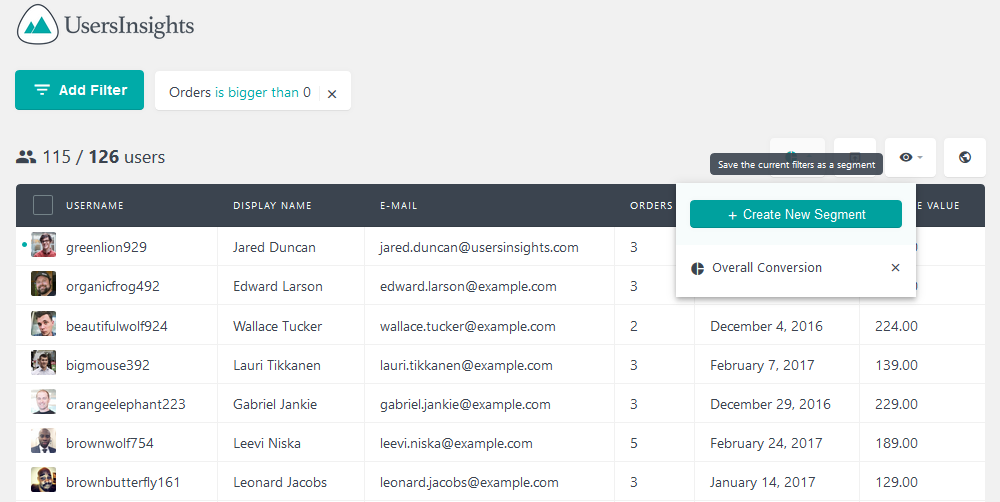
As we discussed earlier, you may get a better conversion rate overall once you know where you are performing well. So, you can filter, for example, the previous report by country, and check where your company has the highest conversion rate.
Just find the total number of users from a country:
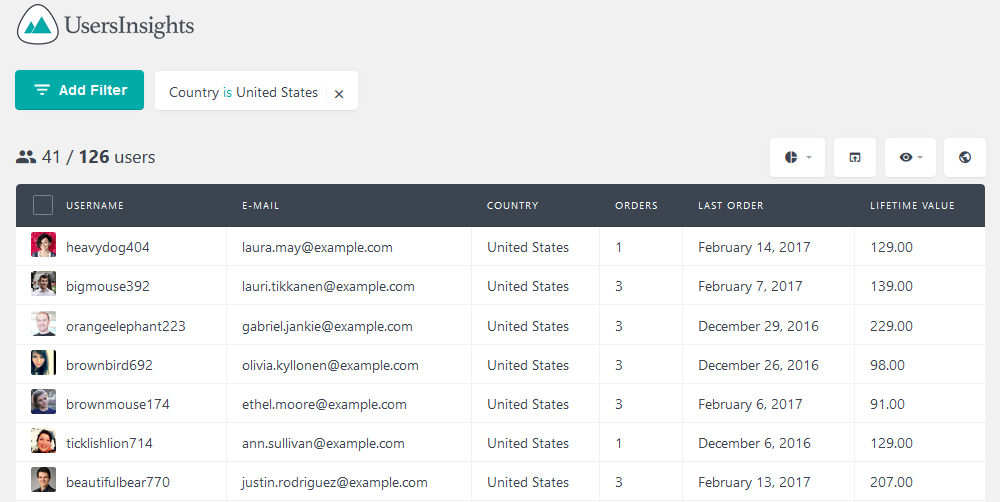
And then find how many of them are actual buyers:
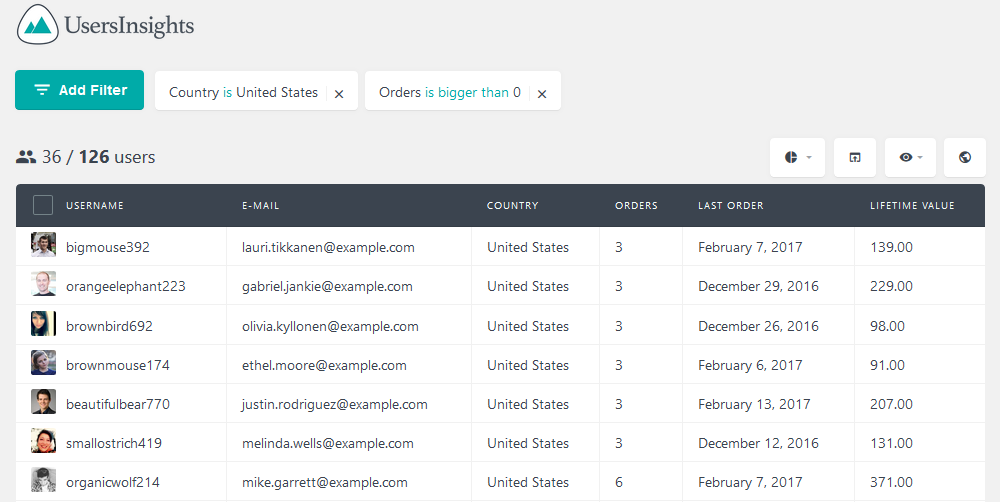
This example has a conversion rate of 87% (36 / 41) for USA customers, which is lower than our store’s average. This tells us that we need to improve this aspect, and from there we can see what’s different in these customers and how to improve the entire store’s performance based on that.
Another important factor is the traffic source. You can use a plugin such as ACF or some custom code to collect your traffic source on registration. Once you do that you can get your WooCommerce conversion rate by traffic source. All we need to do is filter the users by their traffic source:
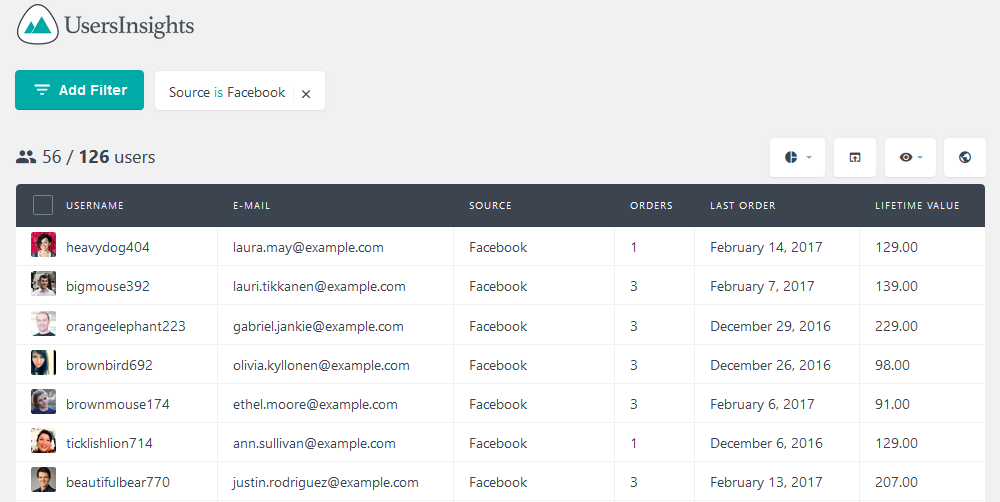
and then apply another filter to find how many of them are customers:
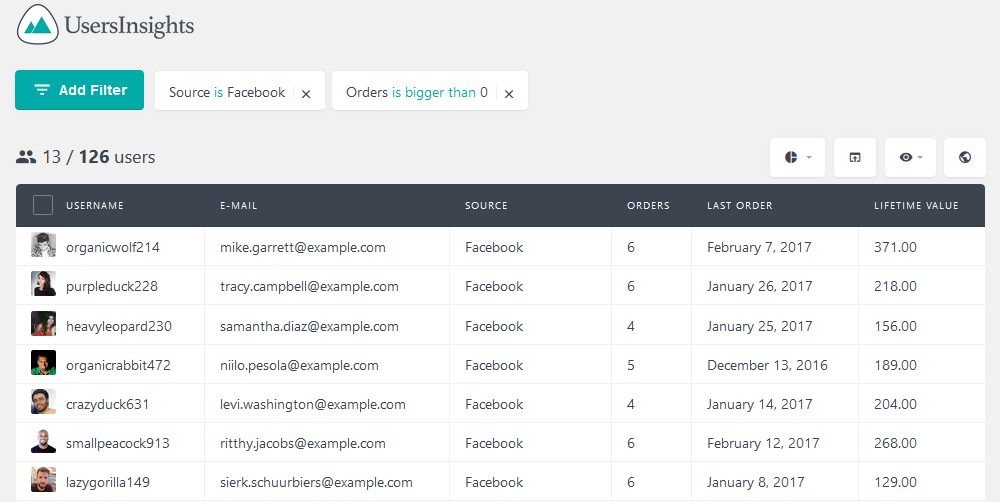
Here we’ve got a 23% conversion rate for Facebook, which is again lower than our average. Once we know this information we know whether or not it’s worth investing more in that traffic source.
Calculating your conversion rate based on visits
Some stores do not allow user registration unless the user is an actual customer. If this is how your store works, you might want to calculate your conversion rate based on the number of visits of your site.
In this example we’ll calculate the conversion rate for the past year.
The first step is finding the number of visits for this period, which you can do with Google Analytics. Let’s say that your store has had 5000 visits for the past year.
Then, we need to find how many customers we have acquired for this period. We can do this by combining the Date Registered filter with the Number of Orders filter.
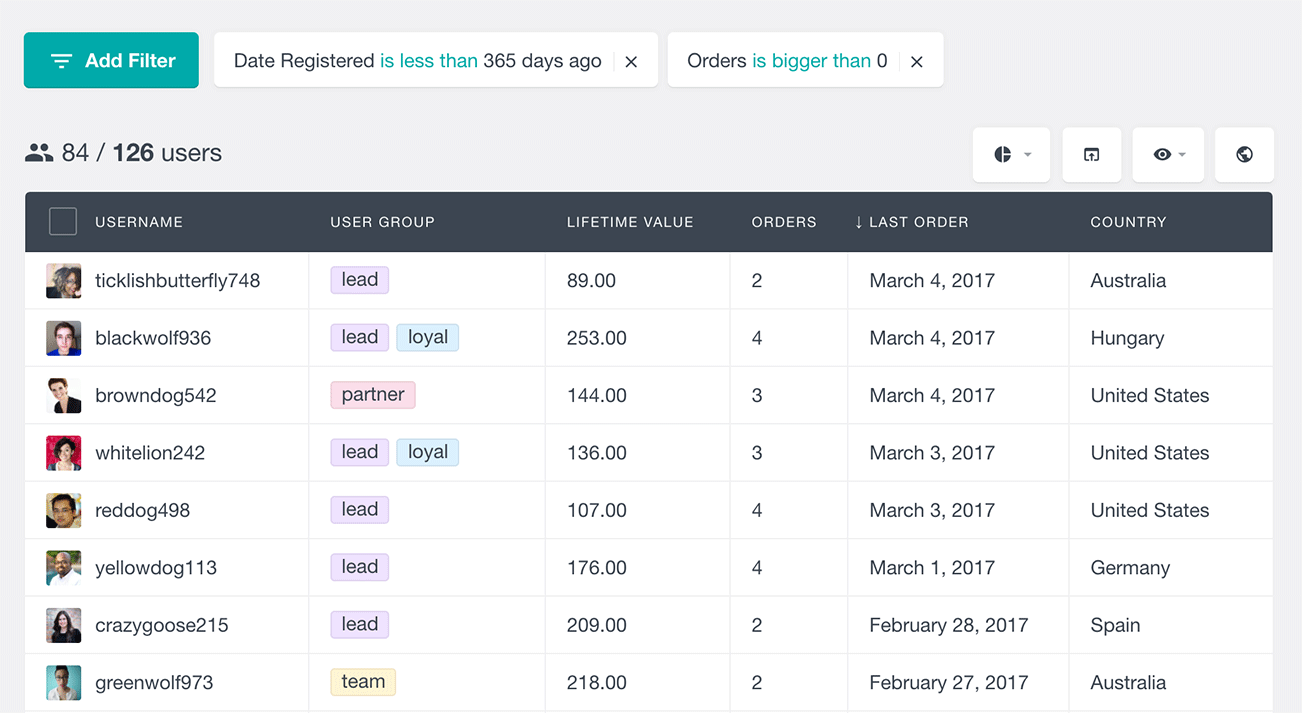
In this example, the number of customers registered in the past year is 84, which means that the conversion rate is 1.68% (84/5000*100).
Conclusion
Today we looked into many aspects of WooCommerce conversion rates. We learned about the basic concepts and advanced measuring methods. After reading though, you should be able to understand, measure and improve your store’s conversion rate.
We hope you enjoyed it and see you again next time!
